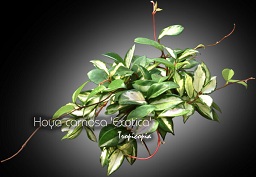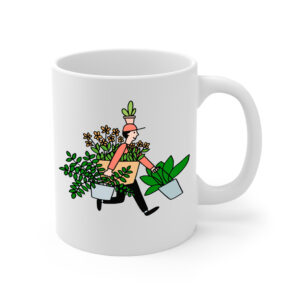Table of contents
Wax plant

Latin Name: Hoya carnosa ‘Exotica’
Category: Hanging
Family: Asclepiadaceae
Origin: Cultivar
Climate: Tropical
Growing Zones: 11-10
Care Instructions
The Wax plant (Hoya carnosa ‘Exotica’) is a tropical plant that originates from Cultivar. This hanging plant belongs to the Asclepiadaceae family and is well-suited for growing in USDA zones 11-10.
Complete Care Guide for Wax Plant (Hoya carnosa ‘Exotica’)
Watering Requirements
The Wax Plant, or Hoya carnosa ‘Exotica’, thrives on a careful watering regimen that mimics its native tropical environment. It is crucial to allow the top inch of soil to dry out between waterings, as this plant is susceptible to root rot if overwatered. During the growing season, typically spring and summer, water the plant thoroughly, ensuring that excess water drains out of the pot. In the fall and winter months, reduce watering frequency, as the plant enters a dormant phase and requires less moisture. A good rule of thumb is to check the soil moisture weekly, adjusting your watering schedule based on the humidity and temperature of your environment.
Light Conditions
Hoya carnosa ‘Exotica’ flourishes in bright, indirect light, making it an ideal choice for indoor spaces near windows that receive filtered sunlight. While it can tolerate lower light conditions, insufficient light may hinder its growth and flowering potential. Direct sunlight can scorch the leaves, so it’s best to avoid placing it in harsh, direct sun. If you notice the leaves becoming leggy or losing their vibrant color, it may be a sign that the plant is not receiving enough light. For optimal growth, consider rotating the plant occasionally to ensure even light exposure on all sides.
Soil Preferences
The ideal soil for Hoya carnosa ‘Exotica’ is a well-draining potting mix that retains some moisture without becoming soggy. A blend of standard potting soil mixed with perlite or orchid bark works well, providing the aeration and drainage that this plant prefers. Additionally, consider using a soil mix that is slightly acidic to neutral (pH 6.0 to 7.0) to promote healthy growth. Fertilization should be done during the growing season with a balanced, water-soluble fertilizer diluted to half strength every 4-6 weeks. Avoid fertilizing during the dormant winter months, as the plant does not require additional nutrients during this time.
Pests and Diseases
While Hoya carnosa ‘Exotica’ is relatively resilient, it can still fall prey to common pests such as mealybugs, aphids, and spider mites. Regularly inspect the undersides of leaves and stems for any signs of infestation. If you notice pests, treat them promptly with insecticidal soap or neem oil, ensuring thorough coverage of the affected areas. Additionally, watch for signs of fungal diseases, which can occur if the plant is overwatered or if humidity levels are too high. Yellowing leaves or a mushy stem can indicate root rot, which requires immediate action to prevent further damage. Always ensure good air circulation around the plant to minimize disease risk.
Special Care Tips
To keep your Hoya carnosa ‘Exotica’ thriving, consider a few special care tips. First, this plant enjoys humidity, so if you live in a dry climate, misting the leaves occasionally or placing a humidity tray nearby can help maintain optimal moisture levels. Additionally, Hoya plants are known for their beautiful, waxy leaves and fragrant flowers, so providing a support structure, such as a trellis or hanging basket, can encourage climbing and enhance its aesthetic appeal. Pruning is also beneficial; remove any dead or yellowing leaves to promote new growth and improve air circulation. Lastly, be patient with flowering; it may take a couple of years for your plant to bloom, but the wait is worth it when you see those stunning clusters of star-shaped flowers!








